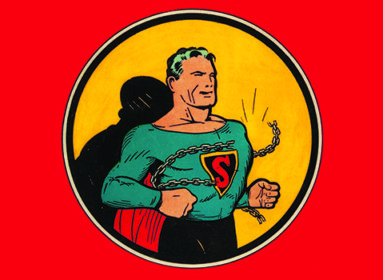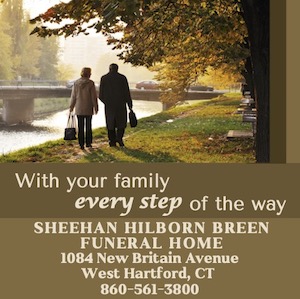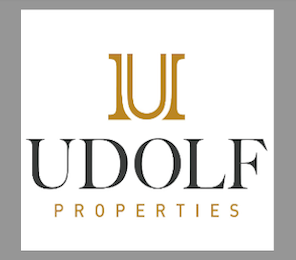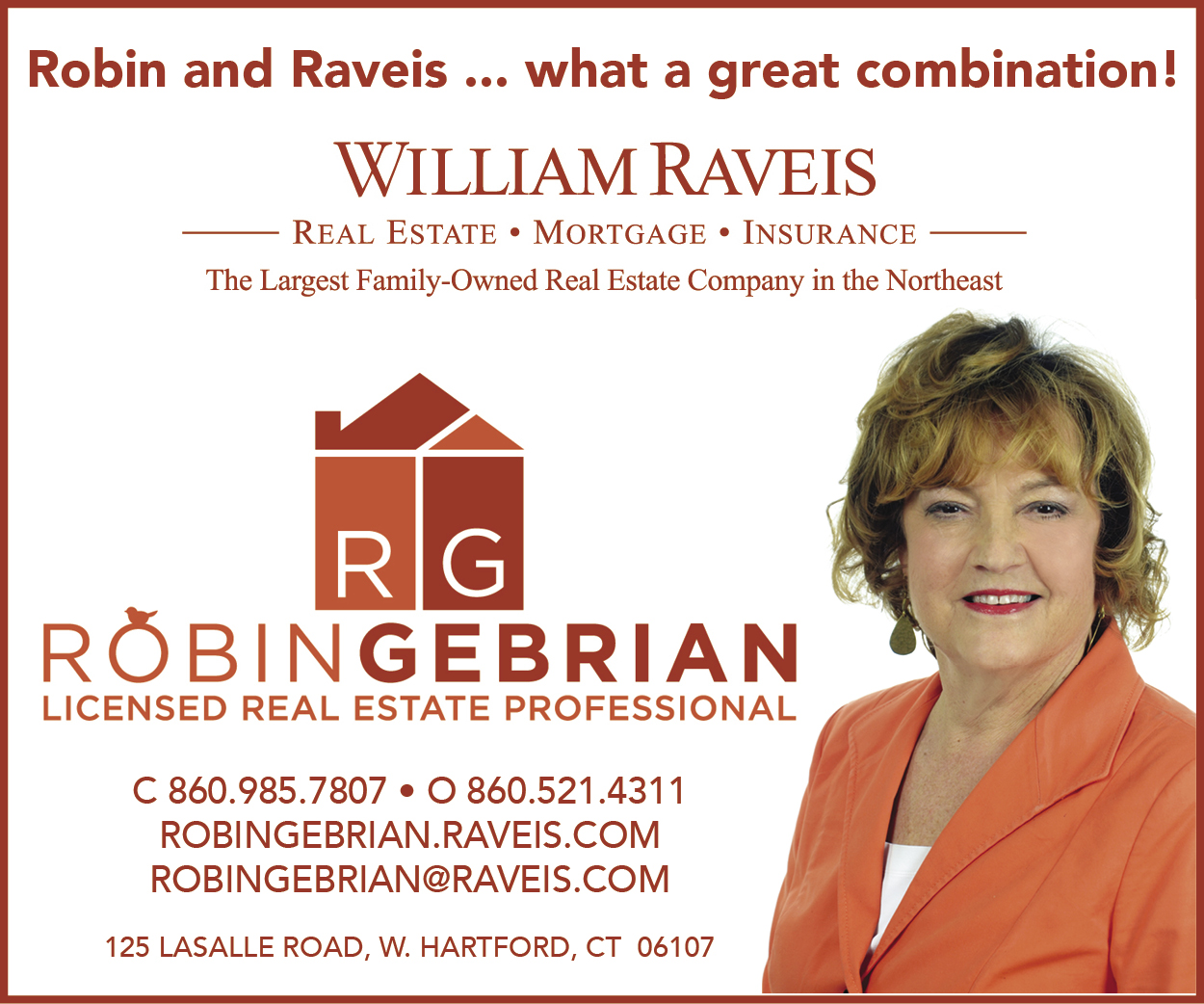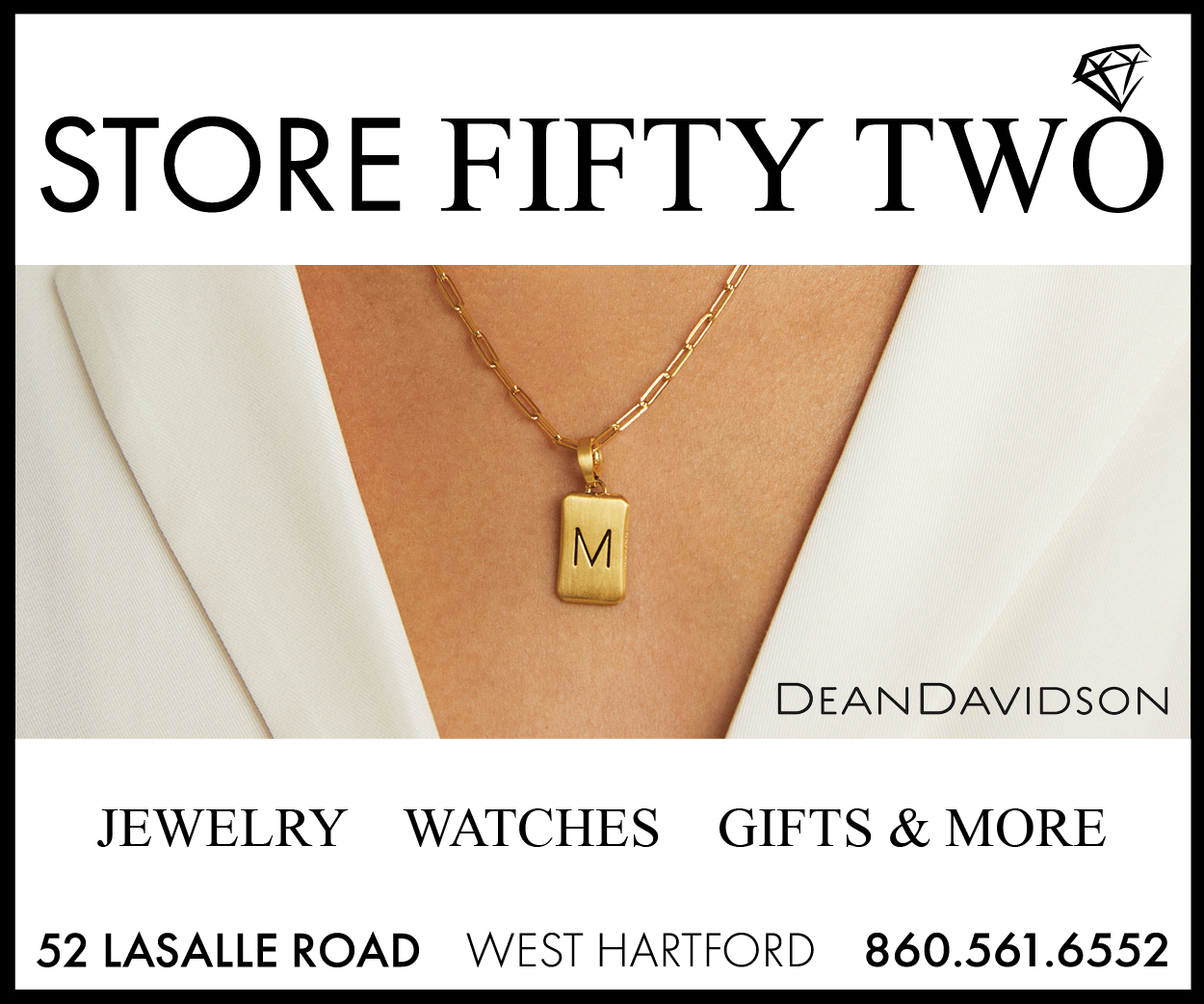
Landmark exhibit chronicles the slow rise of a community
By Cindy Mindell
COS COB – Even in the 21st century, it’s difficult for people of a certain age to mention “Greenwich” and “Jews” in the same sentence without a tinge of hesitation. The association is likely to conjure the iconic novel and film, Gentleman’s Agreement – the 1947 fictional account based on real-life restrictions on Jews seeking to settle in the exclusive Connecticut bedroom communities along the Metro North commuter line, like Darien and Greenwich.
At the same time, one only need look around modern-day Greenwich to understand that the Jewish story is more nuanced and complex. Witness the century-old Jewish cemetery on Memory Lane, the grand estates owned by Jewish millionaires like Wertheim and Gimbel, and more recently, the Israeli flag hoisted annually at Town Hall for a communal Israel Independence Day celebration.
The truth about Jews in Greenwich lies somewhere in between, as showcased in a new exhibit opening later this month at the Greenwich Historical Society (GHS). An American Odyssey: The Jewish Experience in Greenwich tells the little-known story of the town’s Jewish community, answering questions about how – and why – Jewish immigrants ventured into foreign territory at the turn of the century.
Bringing together a rich collection of historic memorabilia and first-person accounts, the exhibit chronicles how Jews, like other immigrants, struggled with the pull to integrate into American society and yet also remain distinct – offering significant contributions to the cultural and economic vitality of Greenwich despite humble beginnings, periods of discrimination, and restrictions on worship, employment, and housing opportunities.
The idea behind An American Odyssey was conceived by GHS Vice Chairman Jessica Guff and the exhibition committee. Over the past two years, the society has worked with the Jewish community to collect the content that eventually shaped the exhibit. UJA Greenwich hosted “discovery days” with GHS staff, inviting community members to share family histories and artifacts, and helped publicize the project via the Greenwich Jewish News and social media.
“The Greenwich Historical Society is committed to bringing Greenwich’s history alive so that the community is prepared to address the challenges it faces today and into the future,” says Debra Mecky, executive director of the Greenwich Historical Society. “Despite their relatively small population, the Jews in Greenwich have had an outsized influence on the cultural and economic legacy of Greenwich. Up to now, there hasn’t been a comprehensive look at their history and accomplishments. Just as the Historical Society did with past exhibitions on Italian Americans, African Americans, and Japanese Americans in Greenwich, we’re confident that this exhibition will encourage greater appreciation for our town’s vibrant history and encourage more active involvement in preserving its rich legacy.”
Drawing from the Greenwich Library Oral History Project and the Jewish Historical Society of Fairfield Country, the exhibit is organized around seven over-arching themes, each supported by richly evocative stories, original objects, documents, photographs, and first-person accounts and audio recordings: Jews in Colonial Greenwich; Mass Migration of Eastern European Jews; The Town the Settlers Found; Gaining an Economic Foothold 1880-1930; The Founding of Temple Sholom; Immigration Ends, Anti-Semitism Intensifies 1924-1940s; and Postwar Greenwich, Jews Suburbanize.
“This is among the most significant exhibitions in the history of the Historical Society,” says Mecky. “Despite its relatively small but growing population, the Jewish community has had an outsized influence on Greenwich. Many of the stores on Greenwich Avenue were established by Jewish immigrants who came here from Eastern Europe with little or no money. Many Jewish families have made their mark through generous philanthropy that has contributed enormously to the town’s vitality. Their story is integral to understanding Greenwich’s legacy and prominent stature in the United States.
The exhibition is curated by Dr. Ann Meyerson, a nationally recognized independent museum curator who most recently co-curated The First Jewish Americans: Freedom and Culture in the New World at the New York Historical Society.
Meyerson was drawn to the project because it afforded the opportunity to conduct original primary research on a largely uncharted topic.
“There were histories of the Jews of Stamford, Hartford, Fairfield County, Connecticut, but there was nothing really about Greenwich’s Jewish history,” Meyerson says. “I wanted to find that out; I wanted to know whether it was different from or similar to those other Connecticut stories. My biggest question was, how did the Jews get to this part of the world?”
Connecticut was a later destination for Jewish immigrants. The port cities along the Atlantic coast began to see Jewish settlers (mostly Sephardic) during the Colonial period, with Jews from central Europe (mostly German) arriving in the early 19th century, many to those same seaports, and fewer to states controlled by the Congregationalist Church, like Connecticut and Massachusetts. While it became legal for Jews to worship publicly in New York in 1730, the same right would not be granted in Connecticut until 1843.
“So already you have a limited pool of Jews in Connecticut vis a vis New York, Savannah, Newport, Philadelphia, Charleston – all the port cities that were much friendlier to Jews,” Meyerson says. “But even within Connecticut, Greenwich had a much smaller Jewish population. My theory is that Greenwich had a strictly controlled town governance system – it didn’t become a city; it remained a town, and had very controlled zoning to keep it exclusive. When you have that kind of zoning, you can keep out all kinds of people.”
From 1880 to 1925, nearly three million eastern European Jewish immigrants came to the U.S., many settling on the Lower East Side of Manhattan. In research that Meyerson found on Stamford Jews, she learned that the peddlers among them would leave the city by train, then ride the inter-town trolley system to bring their wares to the small towns of southern Connecticut, returning home every night.
“Over time, as happened everywhere with the Jewish economic trajectory, they started to accumulate enough capital from peddling that they were able to open small stores, so they became merchants in Stamford,” Meyerson says. “Eventually, they decided to settle there as well. My question was, is that what happened in Greenwich too, being right next door to Stamford?”
Almost, but not quite.
Meyerson found her answer in the Greenwich Library Oral History Project, a collection of interviews conducted during the ‘70s with the first generation of Jews born and raised in Greenwich, children of the shop-owners who created the vibrant Greenwich Avenue mercantile strip. After reading the entire catalog of oral histories by Jewish residents, Meyerson chose six emblematic “founding families” as the focus of the exhibit, those merchants who also helped establish the town’s first synagogue: Bennett, Cohen, Marks, Taylor, Tunick, and Weiss.
Meyerson traced the migration route of several of them from a town three miles southwest of Greenwich, Port Chester. With the influx of Jewish immigrants to New York, some settled farther east, in Port Chester, which grew to have a sizable Jewish population. Many of the Jewish families who ultimately settled in Greenwich had settled first with relatives in Port Chester. Through peddling, they eventually amassed enough capital to open stores on nearby Greenwich Avenue and moved to apartments above their businesses.
The oral histories paint a rosy picture of that early period.
“The first Jewish families had a very happy neighborhood life on Greenwich Avenue,” Meyerson says. “There wasn’t a lot of traffic; at night, the kids would all play in the street; they’d walk to the Havemeyer School. They’d visit their grandparents in Port Chester by trolley, and on High Holy Days, the families walked from Greenwich to the synagogue in Port Chester and then come home at night on the trolley.”
Despite the opportunity for commercial success in Greenwich, Meyerson was surprised that Jews chose to settle there at all in the early 20th century, given the lack of Jewish residents and the possibility of incurring antisemitism. “Why wouldn’t the Jews just stay in the Lower East Side and Brooklyn like everyone else? Economically, they probably thought that they would find less competition and that was a good thing,” she says. “But it takes a certain kind of person to be a pioneer in that way. That’s what comes through in the oral histories: these people were willing to be on their own in a very strange land.”
The first Jews settled in Greenwich in 1899. In 1916, the small Jewish community established the Greenwich Hebrew Institute, renting Abrams Hall on Greenwich Avenue for services and religious school. Jewish families kept to themselves and didn’t socialize much outside their community, but Meyerson did not find much evidence of outright discrimination in those early years.
“For the very first generation who settled in Greenwich from the turn of the century up until the ’20s, it doesn’t seem like there was a lot of antisemitism,” she says. “They had their businesses, they were not threatening anybody, they weren’t trying to live anywhere in the town except above their stores. It’s complex: the way I understand it is that different generations had different experiences of antisemitism. In 1924, the Johnson-Reed Act ended immigration and started a whole xenophobic movement, with, for example, Henry Ford’s and Father Coughlin’s propaganda, and antisemitism was rampant, and continued into the Depression and World War II. Especially during the ’30s and ’40s, antisemitism was experienced everywhere and certainly also in Greenwich.”
The exhibit chronicles the slow acceptance of Jews in Greenwich, reflected in artifacts like letters from real-estate brokers and restricted ads, and in quotes from the oral histories.
“They talk about the slurs that were leveled at them as kids going to Island Beach, and about being turned down by real-estate brokers,” Meyerson says. “They talk about what it felt like, even in the ‘50s, to be among the very few Jews in the schools. Some of them talk about getting beaten up and being called names. One woman was so tortured in school that she left for boarding school; she didn’t want to go to the schools in Greenwich anymore. Most people in Greenwich just had no experience with Jews – they were such a tiny minority.”
Meyerson availed herself of items in the Greenwich Historical Society’s collections to tell the generic history of the town, as a broader backdrop and context for telling the story of the Jewish experience there – for example, postcards of the country clubs and fancy hotels of the Gilded Age that catered to wealthy non-Jews.
“One of the women interviewed in the oral-history project talks about how beautiful the Maples Hotel and the country clubs were and says, ‘They had their country clubs but we had nothing,’” Meyerson recalls. “The Jews would look at these places and realize that they weren’t meant for them.”
In 1955, the Greenwich Hebrew Institute was renamed Temple Sholom when ground was broken for a new building on East Putnam Avenue. But the Jewish community didn’t really grow substantially until the 1960s, when the Civil Rights movement led to the easing of residential restrictions in the town.
Some in the next generation, for example, lived in the town but set up businesses in adjacent Stamford, where they could also be part of a vibrant Jewish community. Others, after returning home after World War II, couldn’t find housing in Greenwich, so they acquired both residential and commercial properties in Stamford and Port Chester.
The first Jewish peddlers in Greenwich would certainly not recognize the vibrant community no longer contained on Greenwich Avenue.
“Many years ago, there were some parts of Greenwich that did not welcome Jews, and thankfully, it’s very different today,” says Pam Ehrenkranz, who has served for 21 years as CEO of UJA-JCC Greenwich. “UJA-JCC partners with organizations from the YWCA to the Breast Cancer Alliance to the Bruce Museum. Jews live in every ZIP Code in Greenwich – and it is a great time to be Jewish in Greenwich, with five thriving congregations, and over 2,000 people participating in UJA-JCC events in the last year or so. The First Selectman comes to our Israel Independence Day Celebration at Town Hall – a 30-year tradition – as well as our Holocaust Remembrance Program. New families are moving in all the time. The Greenwich Jewish community is vibrant, engaged, proud – and has many options.”
An American Odyssey: The Jewish Experience in Greenwich opens on Wednesday, Nov. 15 and runs through Sunday, Apr. 15, 2018, accompanied by several related programs. Greenwich Historical Society, 39 Strickland Road, Cos Cob | Hours: Wednesday-Sunday, 12 noon-4 PM | Info: greenwichhistory.org.
CAP: I.J. Weiss stands in front of his business, The Favorite Shoe Store, which opened at 92 Greenwich Avenue in 1914, during the first wave of Jewish immigration, and remained open for 91 years. (photo circa 1915.)
“The Jewish Experience in Greenwich” Exhibition-related Programs
Story Barn: Oy Vey!
November 17, at 7:30 pm
Enjoy stories told without notes on the subject of something gone awry, in a relaxed cabaret-like setting.
Coffee with the Curator, Ann Meyerson, PhD
November 29, at 10:30 am
Meet the curator of this exhibition and hear her insights as she gives a special one-time-only public tour.
Lecture by Dr. Michael Feldberg, executive director of the George Washington Institute for Religious Freedom
January 16, at 7:00 pm
Dr. Feldberg will discuss the history of the Jewish population of Greenwich.
Afternoon Nosh at the Greenwich Historical Society
March 25, at 12:30 pm
Enjoy a selection of foods representing traditional Jewish cuisine.








 Southern New England Jewish Ledger
Southern New England Jewish Ledger


